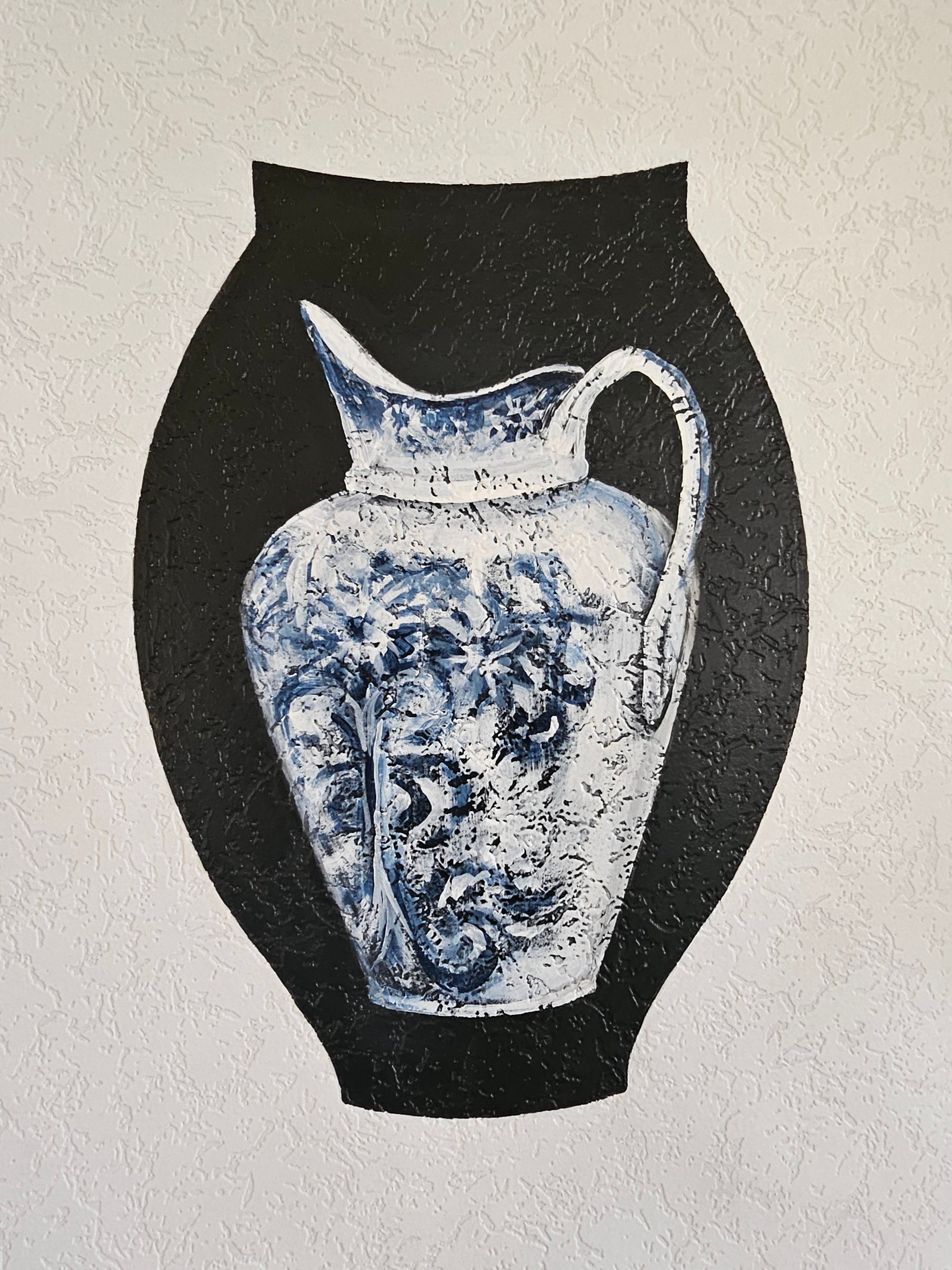Week Three: The ‘porcelain storytellers’ of Clendon House
“Every object tells a story if you know how to read it.” — Henry Ford

During this last week I must admit that the days seem to ‘lose their edges’ a bit. I’ve realised that this residency isn’t just about making work as much as it is about ‘unmaking’ habits!
At the beginning of my second week here, I’d visited the heritage site Clendon House, just a moment’s walk down the road here in the village. Without fully being aware at the time, but magnificently aware now, I lucked-out and happened to get – and just for myself - the ‘guru of historic visitor hosts’ and best storyteller ever – one Aranne Donald, who in her most interesting and varied career, has been a Heritage Architect. She advised on the restoration of this church – the Residency.
Well, I got the treatment. Her storytelling of pre-European Te Tai Tokerau Northland and Clendon’s arrival in the Hokianga, his influence within the thick of Māori and Pakeha interaction, was sublime, and brought to life the time of James Clendon and his family and this period in our history.

This last week I went on to paint a series of the most glorious porcelain jugs, on the texture of anaglypta wallpaper, that were items used on a daily basis in the Clendon household. These quite magnificent jugs and their daily usage within the household, got me wondering about their ‘stories.’ What about their time and place. They had survived their precarious journeys at a time when family china was carried carefully across vast oceans, and when small comforts from England were the fragile threads binding settlers to the ‘Motherland.’ I could write a ‘heap’ more on this subject, about the establishment of our earliest potteries which were much needed to produce more domestic ware because of the need to replace the breakages that were common on these long voyages.




This fascinating family home belonged to English born ship captain, James Clendon, and his second wife Jane. Clendon’s Australian first wife, Sarah, died at Kororareka having given birth to six children. He then, within a short period of time, married a very young Jane Cochrane of Māori and Irish decent – a Hokianga Wahine Toa of some considerable mana. Hokianga society in the late Nineteenth Century was bicultural. Most of the settlers, like Clendon, married into local Māori families.
Clendon House is really the story of Jane who lived here for 50 years, 47 years as a widow. The kitchen is separated from the main house by a covered porch and dates from around 1862 before the building of the main house, after 1866. James Clendon died in 1872.
Clendon was one of New Zealand’s earliest merchants and ship-owners, mainly trading in kauri gum and kauri timber. His story is fascinating and far too complex to even try to precis here. He was a first-generation immigrant settler and founding father in colonial New Zealand.
Clendon was a witness to the signing of the Declaration of Independence and the Treaty of Waitangi. He was chairman of the first bank to open in New Zealand in1840, and a member of the first legislative Council from 1841 – 1844. Clendon became a Police Magistrate in 1845 and later Resident Magistrate, first in Kororareka ( now Russell ), then again at Kerikeri, moving to the Hokianga in 1862.
I spent a day with Aranne on Saturday, the Clendon House storyteller, first over to Kerikeri to their wonderful weekend market in a huge packing shed environment. So popular with locals and visitors for the brilliant plant stalls, organic produce, woodwork, pottery and ceramic stalls, crafted jewellery of a wide range, ointments and oils, clothing both knitted and sewn, brilliant permanent café and goodies, coffee and food trucks and more. Everyone so welcoming, happy and joyful. Then we drove a different way back coming out at Kohukohu in time to venture further, ( round and past where you catch the car ferry to Rawene ), to a friend of Aranne’s who lives up on a ridge along a very dusty road, and deep in the bush in a house truck, producing organic veggie seedlings for markets across the region. On our return to Kohukohu for the afternoon’s music concert of 2 hours, by a wide variety of talented local musicians and choristers, raising money for improvements needed for the local ‘Town Hall’ we detoured to Motukaraka, so I could see the early Twentieth Century Catholic Church you can see across the harbour from Rawene.

Catholic Church at Motukaraka
I must finish here by sharing that I won the raffle for the coveted Xmas Cake made by Ngaire, a local woman ‘famed’ for her cake-making.
I’ve never won a brass razoo. Today Aranne popped in for a chat and we cut the cake and enjoyed its deliciousness – more than once!
I doubt if any will get home to Bruce, who loves fruit cake!!!.... lol



